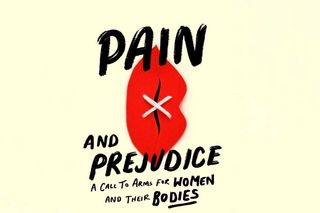
Research: Sexism Has Always Colored Health Care — to the Point of Keeping Women Unhealthy
Men’s domination of everything from research to treatment has limited our knowledge of women’s bodies.

From the earliest days of medicine, women have been considered inferior versions of men. In On the Generation of Animals, the Greek philosopher Aristotle characterized a female as a mutilated male, and this belief has persisted in Western medical culture. “For much of documented history women have been excluded from medical and science knowledge production, so essentially we’ve ended up with a health care system, among other things in society, that has been made by men for men,” Dr. Kate Young tells me. Historically, she says, men have made “the medical science about women and their bodies, and there is an abundance of research evidence about the ways in which that knowledge has been constructed to reinforce the hysteria discourse and women as reproductive bodies discourse. One of my favorite examples is that in some of the first sketches of skeletons, male anatomy artists intentionally made women’s hips look wider and their craniums look much smaller as a way of saying, here is our evidence that women are reproductive bodies and they need to stay at home and we can’t risk making them infertile by making them too educated, look how tiny their heads are. And we see that again and again.”
Not only have doctors, scientists, and researchers mostly been men, but most of the cells, animals, and humans studied in medical science have also been male: most of the advances we’ve seen in medicine have come from the study of male biology. Dr. Janine Austin Clayton, associate director for women’s health research at the United States National Institutes of Health, told the New York Times that the result is, “We literally know less about every aspect of female biology compared to male biology.”
Medicine has always seen women first and foremost as reproductive bodies. Our reproductive organs were the greatest source of difference to men—and because they were different, they were mysterious and suspicious. But the fallout of this difference is that for a long time medicine assumed it was the only difference. Because women had reproductive organs, they should reproduce, and all else about them was deemed uninteresting.
Related on The Swaddle:
Some Doctors See Pain as Just a Symptom of Being Female
In the early 20th century, the endocrine system—which produces hormones—was discovered. To medical minds, this represented another difference between men and women, overtaking the uterus as the primary perpetrator of all women’s ills. Still, medicine persisted with the belief that all other organs and functions would operate the same in men and women, so there was no need to study women. Conversely, researchers said that the menstrual cycle—and varied release of hormones throughout the cycle in rodents—introduced too many variables into a study, therefore females couldn’t be studied.
Diseases presenting differently in women are often missed or misdiagnosed, and those affecting mainly women remain largely a mystery: understudied, undertreated, and frequently misdiagnosed or undiagnosed. This has major knock-on effects for both medical practice and the health of women.
As Young has argued:
“Medicine defines the female and male bodies as distinct but not equal; analysis of medical texts throughout history reveals the male body to be constructed as superior and the template against which bodies are judged. Any aspect of the female body that differs from the male or that cannot be given a male comparative (exemplified by the uterus) is viewed as evidence of deviation or ‘fault’. Because women can bear children, medical discourse associated women with the body and men with the mind, a binary division that reinforces and is reinforced by the public-private division . . . In addition to restricting women’s public contribution, such beliefs provide medicine with an explanatory model of disease and illness in women: to deny one’s ‘biological destiny’ is to incite all manner of diseases, as Plato stated when theorizing the wandering womb.”
We see this in many predominantly female conditions: women with endometriosis are told that delayed childbearing caused the illness, or that pregnancy will cure it; women with breast cancer were once fed this line until advances in research (which only occurred because women campaigned for better knowledge and treatments) proved otherwise.
Related on The Swaddle:
During the 1980s, a group of female scientists in the United States formed a society to campaign for better health research in women, now called the Society for Women’s Health Research. They teamed up with some U.S. Congress members in order to draw attention to the discrepancies in medical research and the effect on women’s health. A 1985 report by the Public Health Service Task Force on Women’s Health warned that “the historical lack of research focus on women’s health concerns has compromised the quality of health information available to women as well as the health care they receive.” The campaign drew attention to some of the absurdities that resulted from this male bias, which Maya Dusenbery has beautifully summarised in Doing Harm. She notes that in the early 1960s:
“observing that women tended to have lower rates of heart disease until their estrogen levels dropped after menopause, researchers conducted the first trial to look at whether supplementation with the hormone was an effective preventive treatment. The study enrolled 8,341 men and no women . . . And an NIH-supported pilot study from Rockefeller University that looked at how obesity affected breast and uterine cancer didn’t enroll a single woman.”
And that’s not all.
“The Baltimore Longitudinal Study of Aging, which began in 1958 and purported to explore ‘normal human aging,’ didn’t enroll any women for the first 20 years it ran. The Physicians’ Health Study, which had recently concluded that taking a daily aspirin may reduce the risk of heart disease? Conducted in 22,071 men and zero women. The 1982 Multiple Risk Factor Intervention Trial—known, aptly enough, as MRFIT—which looked at whether dietary change and exercise could help prevent heart disease: just 13,000 men.”
The result of this male bias in research extends beyond clinical practice. Of the 10 prescription drugs taken off the market by the FDA between 1997 and 2000 due to severe adverse effects, eight caused greater health risks in women. A 2018 study found this was a result of “serious male biases in basic, preclinical, and clinical research.”
The campaign had an effect: in 1993, the U.S. Food and Drug Administration and the National Institutes of Health mandated the inclusion of women in clinical trials. Between the 1970s and 1990s, these organizations and many other national and international regulators had a policy that ruled out women of so-called childbearing potential from early-stage drug trials. The reasoning went like this: since women are born with all the eggs they’ll ever produce, they should be excluded from drug trials in case the drug proves toxic and impedes their ability to reproduce in the future. The result was that all women were excluded from trials, regardless of their age, gender status, sexual orientation, or wish or ability to bear children. Men, on the other hand, constantly reproduce their sperm, meaning they represent a reduced risk. It sounds like a sensible policy, except it treats all women like walking wombs and has introduced a huge bias into the health of the human race.
Related on The Swaddle:
Scientists Seldom Test on Female Lab Rats Because Females Have Hormonal Cycles
In their 1994 book Outrageous Practices, Leslie Laurence and Beth Weinhouse wrote: “It defies logic for researchers to acknowledge gender difference by claiming women’s hormones can affect study results—for instance, by affecting drug metabolism—but then to ignore these differences, study only men, and extrapolate the results to women.”
Since the 1990s, more women have been included in clinical trials but researchers have not always analyzed results by sex and/or gender. And though clinical studies have changed substantially, preclinical studies remained focused on male cell lines and male animals. A 2010 study by Annaliese Beery and Irving Zucker reviewed sex bias in research on mammals in ten biological fields during 2009 and their historical precedents. It found:
“Male bias was evident in eight disciplines and most prominent in neuroscience, with single-sex studies of male animals outnumbering those of females 5.5 to 1. In the past half-century, male bias in non-human studies has increased while declining in human studies. Studies of both sexes frequently fail to analyze results by sex. Underrepresentation of females in animal models of disease is also commonplace, and our understanding of female biology is compromised by these deficiencies.”
The study also found the justification that researchers gave for excluding female animals—that it introduced too much variability in results—to be “without foundation.”
It took until 2014 for the NIH to begin to acknowledge the problem of male bias in preclinical trials, and until 2016 to mandate that any research money it granted must include female animals.
These policies and practices have often been framed as paternalistic, designed to protect women against the harmful effects of medical research. But history belies this notion. The practice of brutal experimentation of medical treatments on women extends beyond the history of hysteria.
This is an extract from Pain and Prejudice: A Call to Arms for Women and Their Bodies by Gabrielle Jackson, available now through Little, Brown/Hachette India.
Gabrielle Jackson is the opinion editor for Guardian Australia. She was previously a senior reporter for The Hoopla and her work has appeared in the Village Voice, CNN, The Sydney Morning Herald and New Matilda.
Related


A Crash Course on Periods for Anyone Who Needs It
